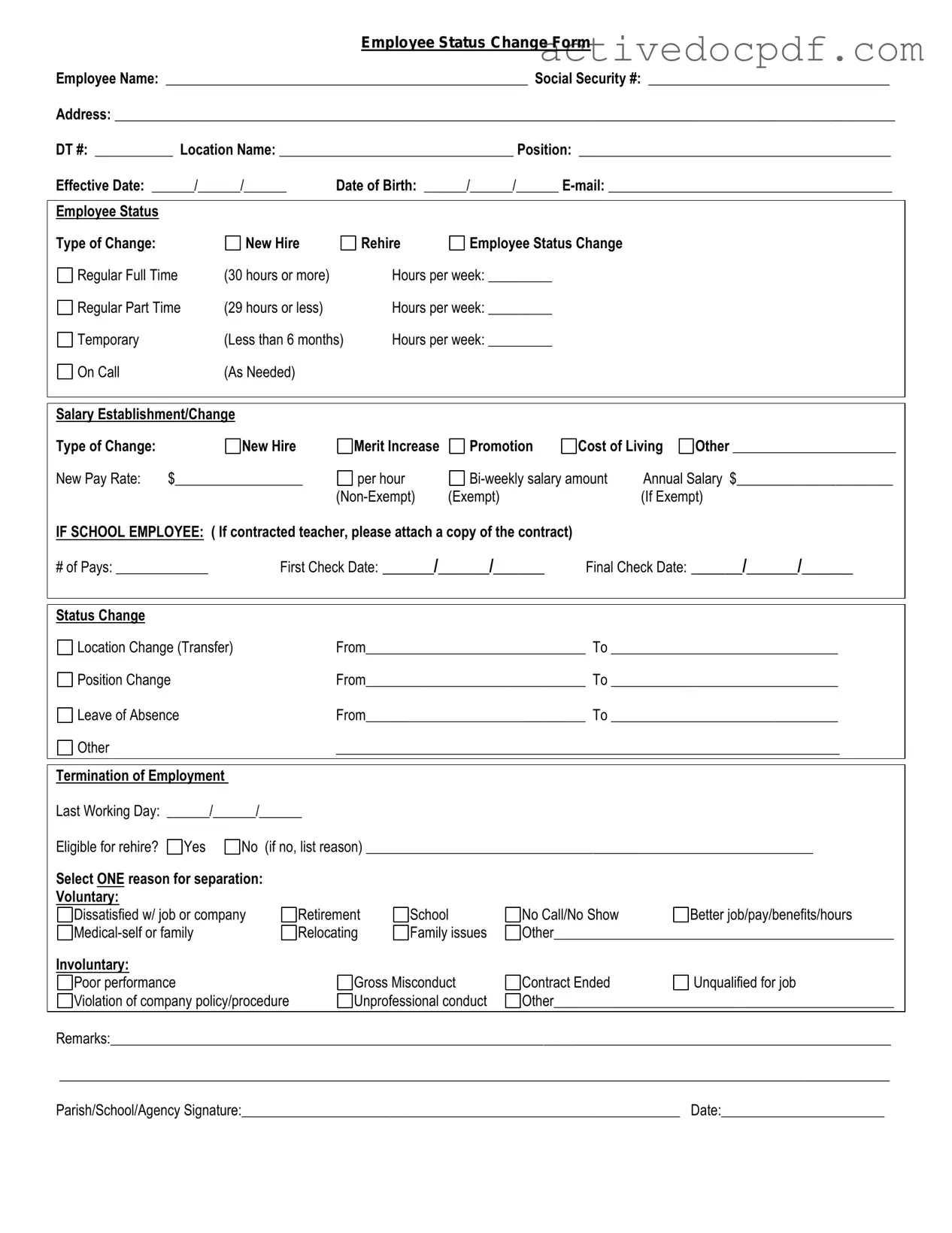Free Employee Status Change PDF Form
The Employee Status Change form is a document used by organizations to formally record changes in an employee's status, such as promotions, transfers, or terminations. This form ensures that all relevant information is updated in the company's records, maintaining accuracy in payroll and benefits administration. Understanding how to properly complete and submit this form is essential for both employees and employers.
Edit Form Online
